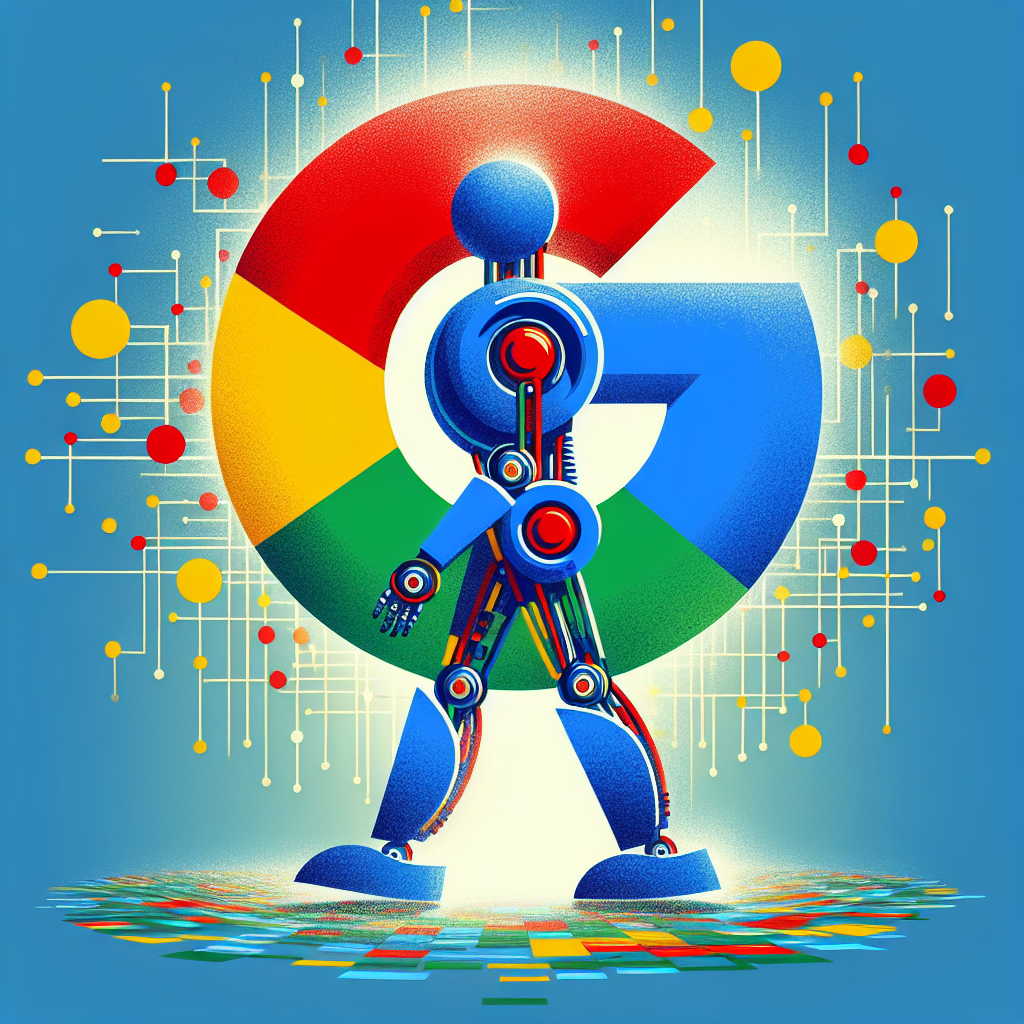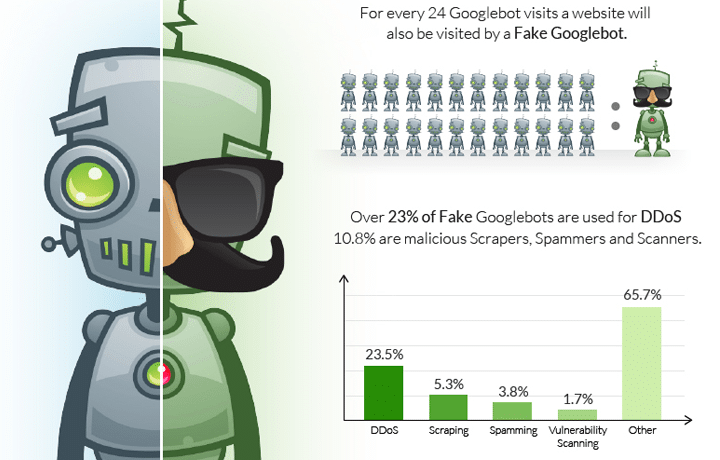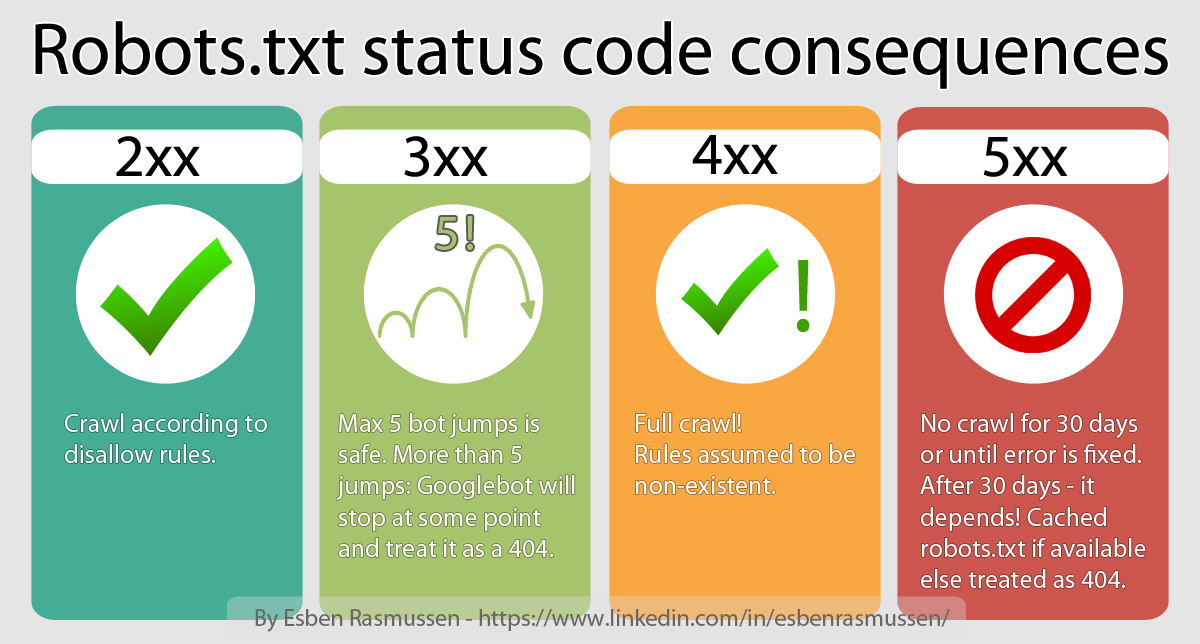Unveiling the mysterious world of Googlebot: What exactly is it and how does it impact your website’s visibility? Find out!

Image courtesy of via DALL-E 3
Table of Contents
Introduction to Googlebot
In today’s digital age, the internet is a vast space filled with information waiting to be discovered. Have you ever wondered how search engines like Google are able to find the answers to all of your questions within seconds? Well, that’s where Googlebot comes into play! Let’s dive into what Googlebot is and why it’s such a crucial part of the online world.
What is Googlebot?
Googlebot is like a friendly digital explorer that Google sends out to browse the internet and collect information. Think of it as a super-smart robot that scans web pages, follows links, and takes note of everything it finds. This data is then used to create search results when you type something into the Google search bar.
Why is Googlebot Important?
Imagine trying to find a needle in a haystack without Googlebot. It would be like searching for a specific book in a massive library without any organization. Googlebot helps make the internet more organized by creating an index of all the information it discovers. This makes it easier for you to find exactly what you’re looking for when you search online.
How Does Googlebot Work?
In order to understand how Googlebot operates, we need to dive into the fascinating world of web crawling and indexing. Let’s explore the intricate process of how Googlebot explores and collects data from websites.
Web Crawling
Web crawling is like a digital spider moving across the vast web, visiting websites and collecting information. Googlebot, the search engine’s web crawling bot, continuously scans the internet by following links from one page to another. It’s like a tireless explorer seeking out new content to bring back to Google’s massive database.
Indexing
Once Googlebot discovers a webpage, it doesn’t just skim over the content—it meticulously saves and organizes the information found. This process is called indexing. By categorizing and storing the data in its index, Google can quickly retrieve and display relevant search results when users type in their queries.
Understanding URLs and Links
In the vast world of the internet, there are countless web pages waiting to be explored. But how does Googlebot, the search engine tool, find its way around to collect information? That’s where URLs and links come into play!

Image courtesy of www.imperva.com via Google Images
What are URLs?
URL stands for Uniform Resource Locator, but you can think of it as a web page’s address. Just like how your home has a unique address, each web page on the internet has its own unique URL. When you type a URL into the search bar, you are telling Googlebot where to go, leading it to different parts of the internet to gather information.
How Googlebot Follows Links
Links, also known as hyperlinks, are like virtual signposts that guide Googlebot from one web page to another. These clickable links are like pathways that help Googlebot navigate through the vast web, moving from one page to another to collect data. When you click on a link, you’re not only exploring new content but also guiding Googlebot in its quest to index information.
How Googlebot Helps Websites
Googlebot is like a detective that helps websites be found by people searching for information on Google. It goes around the internet, exploring different websites to see what they’re all about. When people search for something on Google, the search engine uses the information collected by Googlebot to show the best and most relevant websites in the search results. So, if you want your website to be noticed by people looking for what you offer, you need Googlebot to find and understand your site.
Importance of Being Indexed
Being ‘indexed’ by Googlebot means that your website is on Google’s radar. When Googlebot finds your site, it catalogs and categorizes it, making it easier for people to discover. Imagine being in a library where the librarian knows exactly where to find a book on the shelf – being indexed is like that for your website. It ensures that when someone searches for a topic related to your site, Google can quickly show it in the search results. So, being indexed by Googlebot is crucial for getting your website noticed by the right audience.
Challenges Googlebot Faces
As powerful as Googlebot is in helping people find information on the internet, it also faces its fair share of challenges. Let’s take a closer look at some of the obstacles that Googlebot encounters while crawling the web.

Image courtesy of twitter.com via Google Images
Blocked Pages
Some website owners may not want certain pages to be easily accessible to Googlebot. They can use ‘robots.txt’ files or meta tags to block Googlebot from crawling specific pages. This can prevent Googlebot from indexing valuable content, affecting the website’s visibility in search results.
Dynamic Content
Dynamic content refers to website elements that change frequently or are interactive. While this keeps websites engaging for visitors, it can pose a challenge for Googlebot. Googlebot may struggle to accurately index constantly changing content, leading to outdated information in search results. Website owners need to ensure that dynamic content is still accessible and understandable to Googlebot.
How Websites Can Help Googlebot
One way websites can assist Googlebot in finding and understanding their content is by using clear URLs. URLs are like street addresses for web pages. When website owners create descriptive and user-friendly URLs, it makes it easier for Googlebot to navigate through their site and index the pages accurately. Clear URLs that contain relevant keywords give Googlebot a better understanding of what each page is about.
Creating a Sitemap
Another helpful tool for websites to aid Googlebot is by creating a sitemap. A sitemap is like a map that lists out all the pages on a website. By providing a sitemap, website owners can ensure that Googlebot doesn’t miss any important pages when crawling their site. This helps in indexing all the relevant content on the website, making it more likely to appear in search results when people look for information related to that site.
How Googlebot Affects Search Rankings
Googlebot plays a crucial role in determining where a website appears in search results. It considers various factors to rank web pages based on relevance and quality. One key element Googlebot looks at is the keywords used on a website. If a website contains the same keywords a user is searching for, Googlebot is more likely to rank it higher in the results.

Image courtesy of inspiretothrive.com via Google Images
Another important factor Googlebot considers is the number and quality of backlinks a website has. Backlinks are links from other websites that lead to yours. Googlebot sees backlinks as a sign of credibility and popularity, which can boost a website’s ranking in search results.
Importance of Quality Content
Googlebot values websites that provide users with high-quality, relevant, and reliable information. Websites that offer valuable content are more likely to rank higher in search results. This is because Google’s goal is to provide users with the best possible search experience by directing them to websites that meet their needs.
Creating informative blog posts, articles, or product descriptions can help improve a website’s ranking. By regularly publishing fresh and engaging content, website owners can attract Googlebot’s attention and increase their chances of appearing at the top of search results.
Fun Facts About Googlebot
Googlebot may sound like a complex and serious tool, but there are some fun and interesting facts about this web crawler that you might not know. Let’s dive into some cool tidbits about Googlebot that will keep you entertained while learning about its important role in the online world.
How Often Googlebot Visits
Googlebot is like a busy bee buzzing around the internet, visiting all kinds of websites to collect information. But did you know that Googlebot doesn’t visit every site at the same frequency? Popular and frequently updated sites are more likely to be visited by Googlebot regularly compared to less popular or rarely updated ones. So, if you have a website that you update frequently, you might see Googlebot stopping by more often to check out your new content.
Googlebot’s Nickname
Just like how your friends might have a nickname for you, Googlebot has also been given some fun and quirky nicknames by people. Some of the nicknames floating around for Googlebot include “Spider” and “Crawler” because of its job to crawl the web and collect information like a spider weaving its web. These playful names add a touch of personality to the robotic work Googlebot does behind the scenes.
Conclusion
In conclusion, Googlebot plays a crucial role in the functioning of search engines and the entire internet. As a tool created by Google, Googlebot tirelessly explores the vast expanse of the internet, collecting valuable information that ultimately helps users like you find the information you seek with a simple search. By understanding the basics of Googlebot, we can appreciate its significance in shaping the online landscape.

Image courtesy of seopressor.com via Google Images
Key Points Recap
We learned that Googlebot is a web crawler used by Google to scour the internet, indexing web pages and making them searchable. This process involves crawling websites through URLs and hyperlinks, allowing Googlebot to follow paths and gather data efficiently. The information collected by Googlebot not only helps websites get noticed but also influences search rankings based on various factors, highlighting the importance of quality content and SEO practices.
Online World Impact
For website owners and digital marketers alike, understanding Googlebot and its operations is essential for optimizing websites to be more discoverable and user-friendly. By implementing SEO techniques, creating sitemaps, and ensuring accessible content, websites can enhance their visibility to Googlebot and, in turn, to potential visitors searching for relevant information.
Googlebot’s journey through websites may face challenges such as blocked pages and dynamic content, but with proper optimization and clear URLs, websites can aid Googlebot in its quest to index web pages effectively. This symbiotic relationship between websites and Googlebot underscores the interconnected nature of the online ecosystem.
In essence, Googlebot serves as a bridge between users seeking information and websites providing it, facilitating a seamless online experience for all parties involved. Its continuous exploration of the internet and indexing of web pages contribute to the accessibility and relevance of search results, making Googlebot a vital component in the digital realm.
Want to turn these SEO insights into real results? Seorocket is an all-in-one AI SEO solution that uses the power of AI to analyze your competition and craft high-ranking content.
Seorocket offers a suite of powerful tools, including a Keyword Researcher to find the most profitable keywords, an AI Writer to generate unique and Google-friendly content, and an Automatic Publisher to schedule and publish your content directly to your website. Plus, you’ll get real-time performance tracking so you can see exactly what’s working and make adjustments as needed.
Stop just reading about SEO – take action with Seorocket and skyrocket your search rankings today. Sign up for a free trial and see the difference Seorocket can make for your website!
Frequently Asked Questions (FAQs)
How Can I See If Googlebot Visited My Website?
If you are curious about whether Googlebot has paid a visit to your website, you can check your server logs or website analytics reports. These logs and reports will show you when Googlebot last accessed your site and which pages it crawled. By reviewing this information, you can keep track of Googlebot’s activity on your website.
Can I Control What Googlebot Indexes?
Yes, as a website owner, you have some control over what Googlebot indexes on your site. You can use a file called ‘robots.txt’ to tell Googlebot which pages to crawl and which ones to avoid. Additionally, you can use meta tags to provide further instructions to Googlebot regarding the content you want it to index. By utilizing these tools, you can manage how Googlebot interacts with your website.
Will Googlebot Slow Down My Website?
Rest assured, Googlebot’s visits are not likely to slow down your website. Googlebot is designed to crawl the web efficiently and without causing a significant impact on website performance. Googlebot is constantly improving to ensure smooth operation, so you can focus on providing great content without worrying about your site’s speed being affected by its visits.







